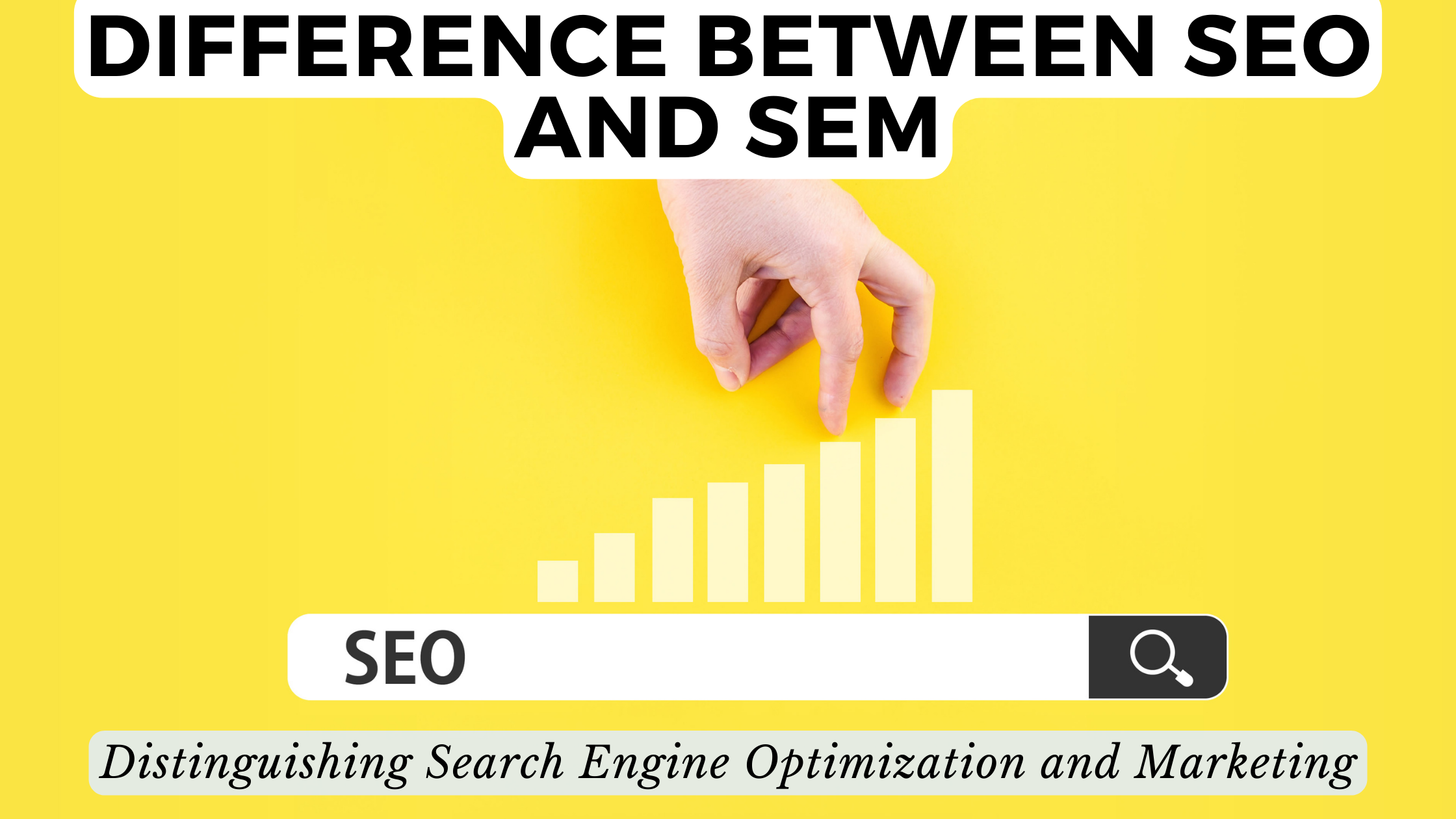Difference Between SEO and SEM: Distinguishing Search Engine Optimization and Marketing
- Conversational Marketing Software SEO Software Affiliate Marketing Software Marketing Tools


Difference Between SEO and SEM: Distinguishing Search Engine Optimization and Marketing
In the digital realm, the acronyms SEO and SEM are often used interchangeably, leading to confusion regarding their roles and impact on online visibility. It’s crucial to recognize that while both are integral components of digital marketing, they serve distinct purposes. Let’s delve into the nuances of SEO (Search Engine Optimization) and SEM (Search Engine Marketing), unraveling the differences that set them apart.
Understanding SEO: Unveiling the Organic Approach
Definition:
SEO is the practice of optimizing a website’s content, structure, and other elements to enhance its visibility on search engine results pages (SERPs) organically. Organic refers to non-paid search results.
Key Elements:
- Keyword Optimization: Strategically incorporating relevant keywords into website content.
- Quality Content: Producing high-quality, informative, and engaging content.
- Backlink Building: Acquiring links from reputable websites to enhance credibility.
- Site Structure: Ensuring a user-friendly and well-structured website.
Benefits:
- Long-term Visibility
- Credibility and Trust
- Cost-Effective Over Time
Navigating SEM: Embracing Paid Strategies
Definition:
SEM involves paid strategies to promote a website’s visibility on search engines. It often includes activities like pay-per-click (PPC) advertising, where advertisers pay a fee each time their ad is clicked.
Key Elements:
- Paid Advertising: Placing ads on search engine result pages.
- Keyword Bidding: Competing for ad placement based on chosen keywords.
- Ad Copy Creation: Crafting compelling and concise ad content.
- Landing Page Optimization: Ensuring that the destination page aligns with user expectations.
Benefits:
- Immediate Visibility
- Targeted Advertising
- Measurable and Adaptable
Distinguishing Factors: SEO vs. SEM
1. Cost:
- SEO: Generally has a more extended timeline and is considered a long-term investment.
- SEM: Involves immediate costs with the potential for quick returns.
2. Visibility:
- SEO: Builds gradual visibility through optimized content and user experience.
- SEM: Offers immediate visibility through paid placements.
3. Control:
- SEO: Relies on algorithms and is subject to search engine updates.
- SEM: Provides more control over when and where ads appear.
4. Approach:
- SEO: Organic, focusing on content and website optimization.
- SEM: Involves paid tactics for instant results.
SaaS Products for Streamlining SEO and SEM
To effectively manage your SEO and SEM strategies, consider incorporating the following SaaS tools:
- Moz: A comprehensive SEO tool offering features like keyword research, site audits, and backlink analysis.
- Google Ads: Google’s advertising platform for creating and managing SEM campaigns.
- Ahrefs: An all-in-one SEO toolset providing capabilities such as competitor analysis, keyword tracking, and site audits.
- SEMrush: A versatile tool for both SEO and SEM, offering insights into keywords, competitors, and ad strategies.
- Yoast SEO: A WordPress plugin that aids in optimizing content for SEO.
Conclusion: Crafting a Holistic Strategy
In conclusion, SEO and SEM each play pivotal roles in enhancing online visibility, albeit through different methodologies. While SEO focuses on organic, long-term growth, SEM leverages paid strategies for immediate results. A well-rounded digital marketing strategy often integrates both approaches, ensuring a holistic and effective online presence.
Discover exclusive deals on SEO and SEM tools on Subscribed.FYI Deals. Sign up today to unlock savings on Moz, Google Ads, Ahrefs, SEMrush, and Yoast SEO. Subscribed.FYI is your gateway to optimizing your digital marketing strategies seamlessly.
Relevant Links:





